�
S E C O N D E D I T I O N
Optical Fiber Communication
Systems with MATLAB®
and Simulink® Models
Optics and Photonics
Series Editor
Le Nguyen Binh
Huawei Technologies, European Research Center, Munich, Germany
1. Digital Optical Communications, Le Nguyen Binh
2. Optical Fiber Communications Systems: Theory and Practice with MATLAB®
and Simulink® Models, Le Nguyen Binh
3. Ultra-Fast Fiber Lasers: Principles and Applications with MATLAB® Models,
Le Nguyen Binh and Nam Quoc Ngo
4. Thin-Film Organic Photonics: Molecular Layer Deposition and Applications,
Tetsuzo Yoshimura
5. Guided Wave Photonics: Fundamentals and Applications with MATLAB®,
Le Nguyen Binh
6. Nonlinear Optical Systems: Principles, Phenomena, and Advanced Signal
Processing, Le Nguyen Binh and Dang Van Liet
7. Wireless and Guided Wave Electromagnetics: Fundamentals and
Applications, Le Nguyen Binh
8. Guided Wave Optics and Photonic Devices, Shyamal Bhadra and Ajoy Ghatak
9. Digital Processing: Optical Transmission and Coherent Receiving Techniques,
Le Nguyen Binh
10. Photopolymers: Photoresist Materials, Processes, and Applications,
Kenichiro Nakamura
11. Optical Fiber Communication Systems with MATLAB® and Simulink® Models,
Second Edition, Le Nguyen Binh
�
S E C O N D E D I T I O N
Optical Fiber Communication
Systems with MATLAB®
and Simulink® Models
Le Nguyen Binh
H U A W E I T E C H N O L O G I E S C O . , LT D . , E U R O P E A N R E S E A R C H C E N T E R
M U E N C H E N , G E R M A N Y
Boca Raton London New York
CRC Press is an imprint of the
Taylor & Francis Group, an informa business
�
MATLAB® and Simulink® are trademarks of The MathWorks, Inc. and are used with permission. The MathWorks does
not warrant the accuracy of the text or exercises in this book. The book’s use or discussion of MATLAB® and Simulink®
software or related products does not constitute endorsement or sponsorship by The MathWorks of a particular peda-
gogical approach or particular use of the MATLAB® and Simulink® software.
CRC Press
Taylor & Francis Group
6000 Broken Sound Parkway NW, Suite 300
Boca Raton, FL 33487-2742
© 2015 by Taylor & Francis Group, LLC
CRC Press is an imprint of Taylor & Francis Group, an Informa business
No claim to original U.S. Government works
Version Date: 20141003
International Standard Book Number-13: 978-1-4822-1752-0 (eBook - PDF)
This book contains information obtained from authentic and highly regarded sources. Reasonable efforts have been
made to publish reliable data and information, but the author and publisher cannot assume responsibility for the valid-
ity of all materials or the consequences of their use. The authors and publishers have attempted to trace the copyright
holders of all material reproduced in this publication and apologize to copyright holders if permission to publish in this
form has not been obtained. If any copyright material has not been acknowledged please write and let us know so we may
rectify in any future reprint.
Except as permitted under U.S. Copyright Law, no part of this book may be reprinted, reproduced, transmitted, or uti-
lized in any form by any electronic, mechanical, or other means, now known or hereafter invented, including photocopy-
ing, microfilming, and recording, or in any information storage or retrieval system, without written permission from the
publishers.
For permission to photocopy or use material electronically from this work, please access www.copyright.com (http://
www.copyright.com/) or contact the Copyright Clearance Center, Inc. (CCC), 222 Rosewood Drive, Danvers, MA 01923,
978-750-8400. CCC is a not-for-profit organization that provides licenses and registration for a variety of users. For
organizations that have been granted a photocopy license by the CCC, a separate system of payment has been arranged.
Trademark Notice: Product or corporate names may be trademarks or registered trademarks, and are used only for
identification and explanation without intent to infringe.
Visit the Taylor & Francis Web site at
http://www.taylorandfrancis.com
and the CRC Press Web site at
http://www.crcpress.com
�
To the memory of my father
To my mother, Mrs. T. H. Nguyen
To Phuong and Lam
�
This page intentionally left blank
This page intentionally left blank
�
Contents
Preface............................................................................................................................................ xxi
List.of.Abbreviations.................................................................................................................. xxv
1. Introduction..............................................................................................................................1
1.1. Historical.Perspectives..................................................................................................2
1.2. Digital.Modulation.for.Advanced.Optical.Transmission.Systems.........................5
1.3. Demodulation.Techniques............................................................................................8
1.4. MATLAB®.Simulink®.Platform....................................................................................9
1.5. Organization.of.the.Book.Chapters........................................................................... 10
2. Optical Fibers:.Geometrical and Guiding Properties.................................................... 13
2.1. Motivations.and.Some.Historical.Background........................................................ 13
2.2. Dielectric.Slab.Optical.Waveguides.......................................................................... 15
2.2.1. Structure........................................................................................................... 16
2.2.2. Numerical.Aperture....................................................................................... 17
2.2.3. Modes.of.Symmetric.Dielectric.Slab.Waveguides..................................... 17
2.2.3.1. The.Wave.Equations....................................................................... 18
2.2.4. Optical-Guided.Modes.................................................................................. 19
2.2.4.1. Even.TE.Modes................................................................................20
2.2.4.2. Odd.TE.Modes.................................................................................20
2.2.4.3. Graphical.Solutions.for.Guided.TE.Modes.(Even.and.Odd)..... 21
2.2.5. Cutoff.Properties.............................................................................................22
2.3. Optical.Fiber:.General.Properties..............................................................................23
2.3.1. Geometrical.Structures.and.Index.Profile...................................................23
2.3.1.1. Step-Index.Profile............................................................................ 24
2.3.1.2. Graded-Index.Profile....................................................................... 24
2.3.1.3. Power-Law-Index.Profile................................................................ 24
2.3.1.4. Gaussian-Index.Profile...................................................................25
2.3.2. The.Fundamental.Mode.of.Weakly.Guiding.Fibers..................................25
2.3.2.1. Solutions.of.the.Wave.Equation.for.Step-Index.Fiber................26
2.3.3. Cutoff.Properties............................................................................................. 31
2.3.4. Single.and.Few.Mode.Conditions................................................................ 32
2.4. Power.Distribution.and.Approximation.of.Spot.Size.............................................35
2.4.1. Power.Distribution.........................................................................................35
2.4.2. Approximation.of.Spot.Size.r0.of.a.Step-Index.Fiber.................................36
2.5. Equivalent.Step-Index.(ESI).Description.................................................................. 37
2.5.1. Definitions.of.ESI.Parameters.......................................................................38
2.5.2. Accuracy.and.Limits...................................................................................... 39
2.5.3. Examples.on.ESI.Techniques......................................................................... 39
2.5.3.1. Graded-Index.Fibers....................................................................... 39
2.5.3.2. Graded-Index.Fiber.with.a.Central.Dip....................................... 39
2.5.4. General.Method..............................................................................................40
vii
�
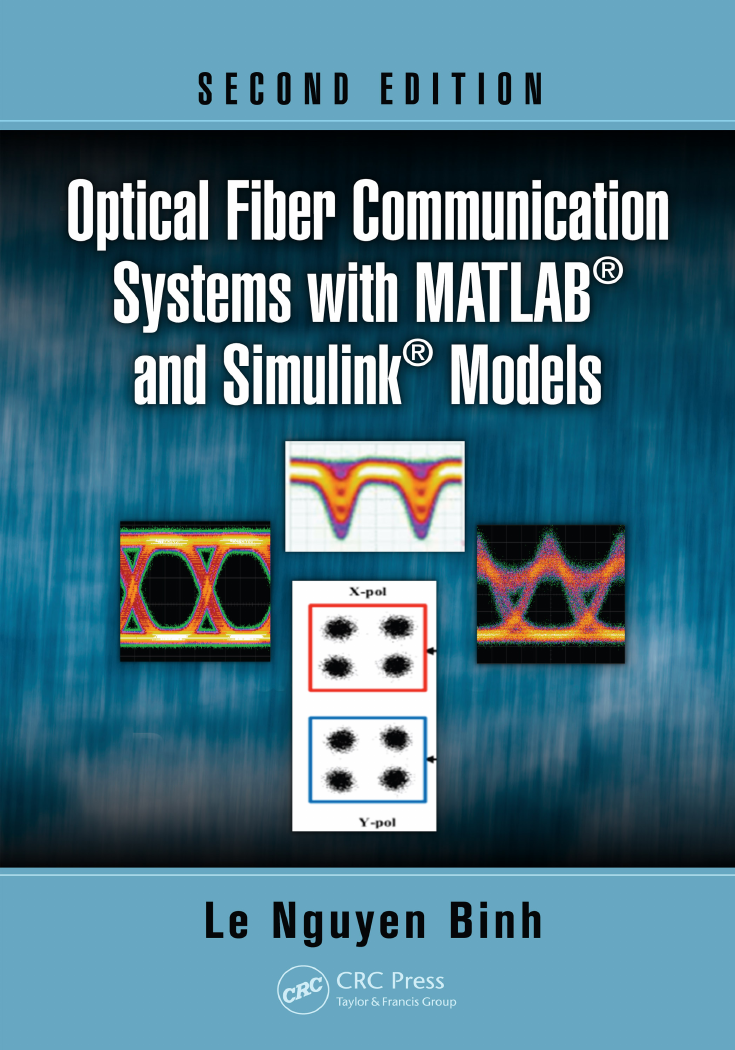
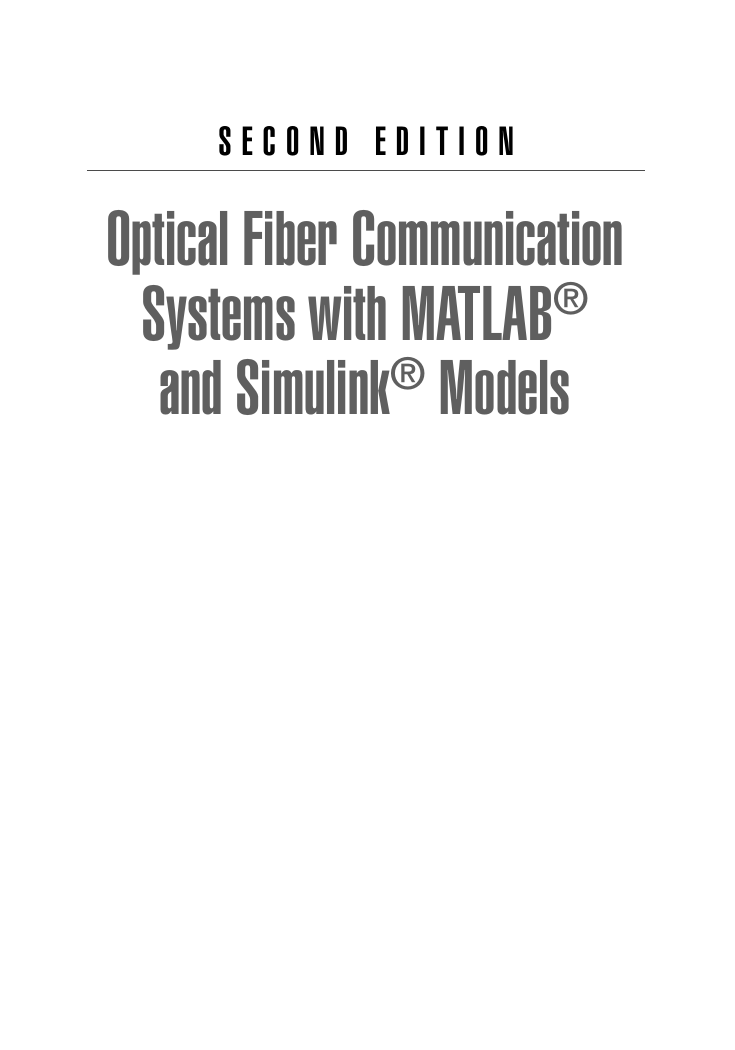
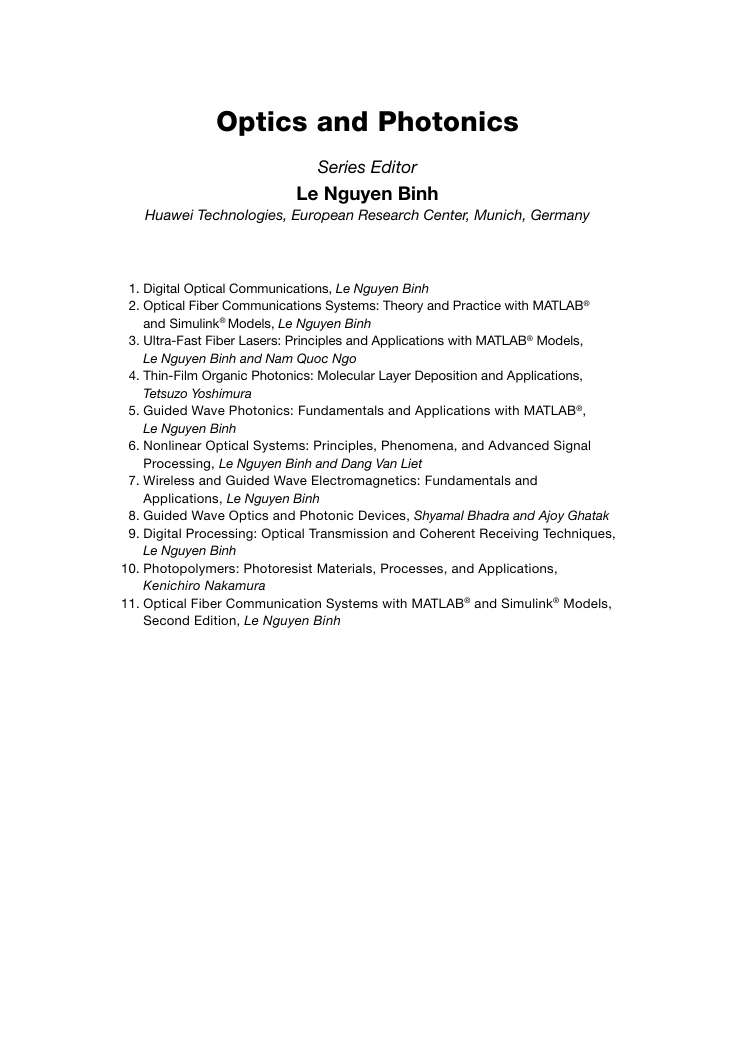

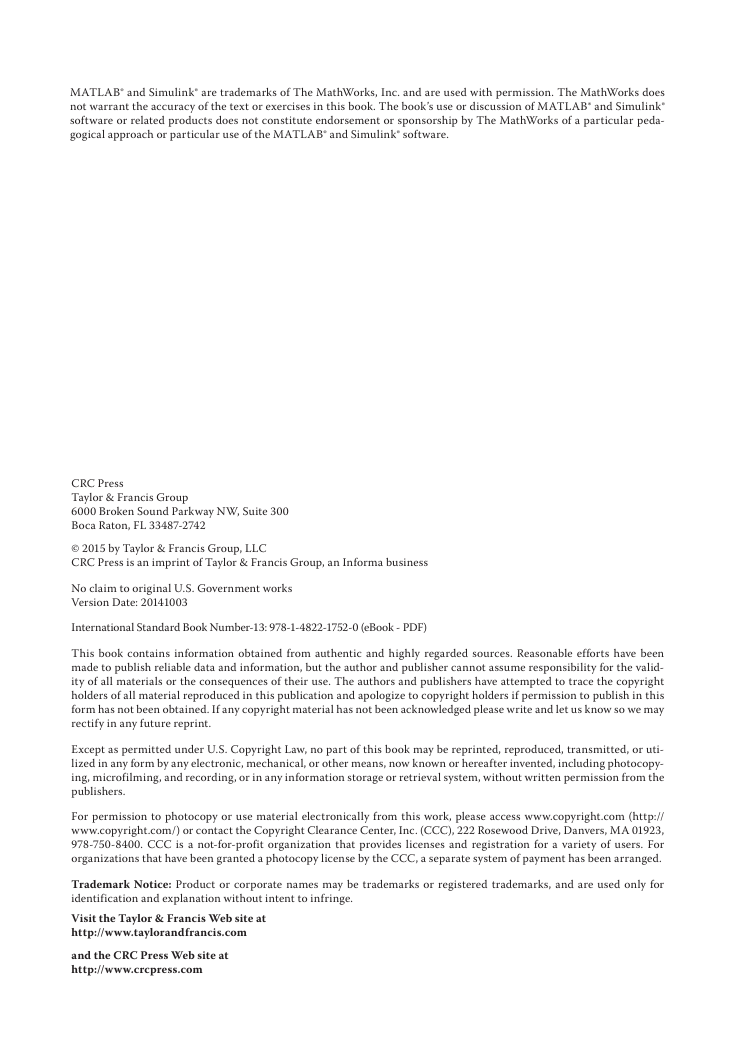


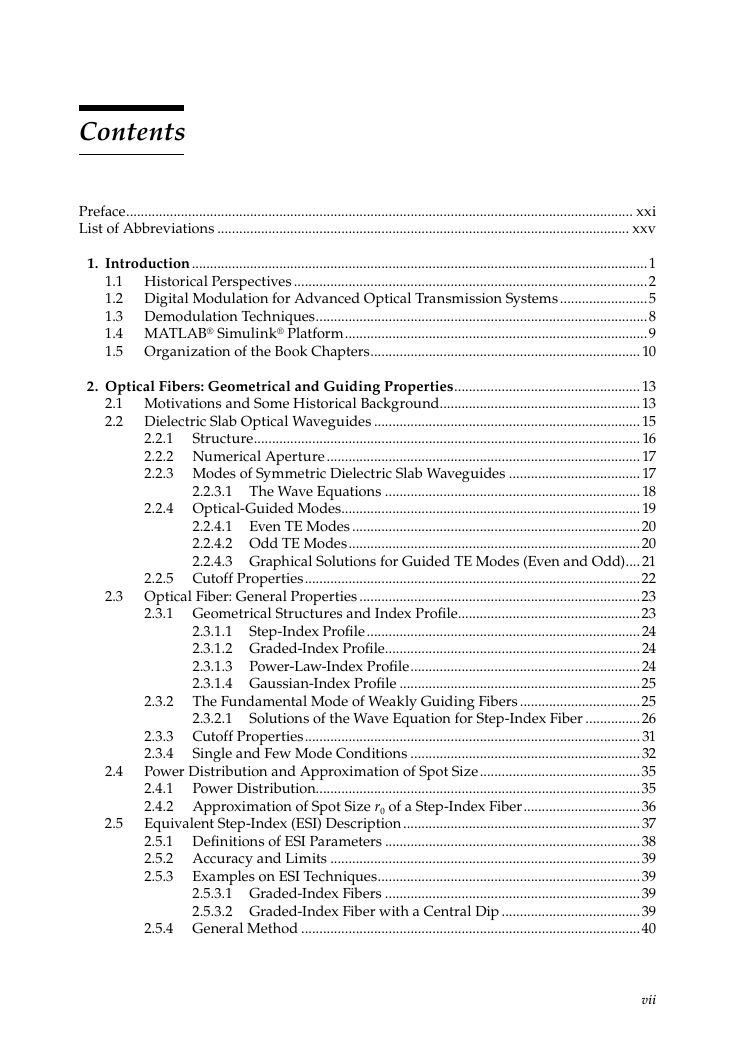








 2023年江西萍乡中考道德与法治真题及答案.doc
2023年江西萍乡中考道德与法治真题及答案.doc 2012年重庆南川中考生物真题及答案.doc
2012年重庆南川中考生物真题及答案.doc 2013年江西师范大学地理学综合及文艺理论基础考研真题.doc
2013年江西师范大学地理学综合及文艺理论基础考研真题.doc 2020年四川甘孜小升初语文真题及答案I卷.doc
2020年四川甘孜小升初语文真题及答案I卷.doc 2020年注册岩土工程师专业基础考试真题及答案.doc
2020年注册岩土工程师专业基础考试真题及答案.doc 2023-2024学年福建省厦门市九年级上学期数学月考试题及答案.doc
2023-2024学年福建省厦门市九年级上学期数学月考试题及答案.doc 2021-2022学年辽宁省沈阳市大东区九年级上学期语文期末试题及答案.doc
2021-2022学年辽宁省沈阳市大东区九年级上学期语文期末试题及答案.doc 2022-2023学年北京东城区初三第一学期物理期末试卷及答案.doc
2022-2023学年北京东城区初三第一学期物理期末试卷及答案.doc 2018上半年江西教师资格初中地理学科知识与教学能力真题及答案.doc
2018上半年江西教师资格初中地理学科知识与教学能力真题及答案.doc 2012年河北国家公务员申论考试真题及答案-省级.doc
2012年河北国家公务员申论考试真题及答案-省级.doc 2020-2021学年江苏省扬州市江都区邵樊片九年级上学期数学第一次质量检测试题及答案.doc
2020-2021学年江苏省扬州市江都区邵樊片九年级上学期数学第一次质量检测试题及答案.doc 2022下半年黑龙江教师资格证中学综合素质真题及答案.doc
2022下半年黑龙江教师资格证中学综合素质真题及答案.doc